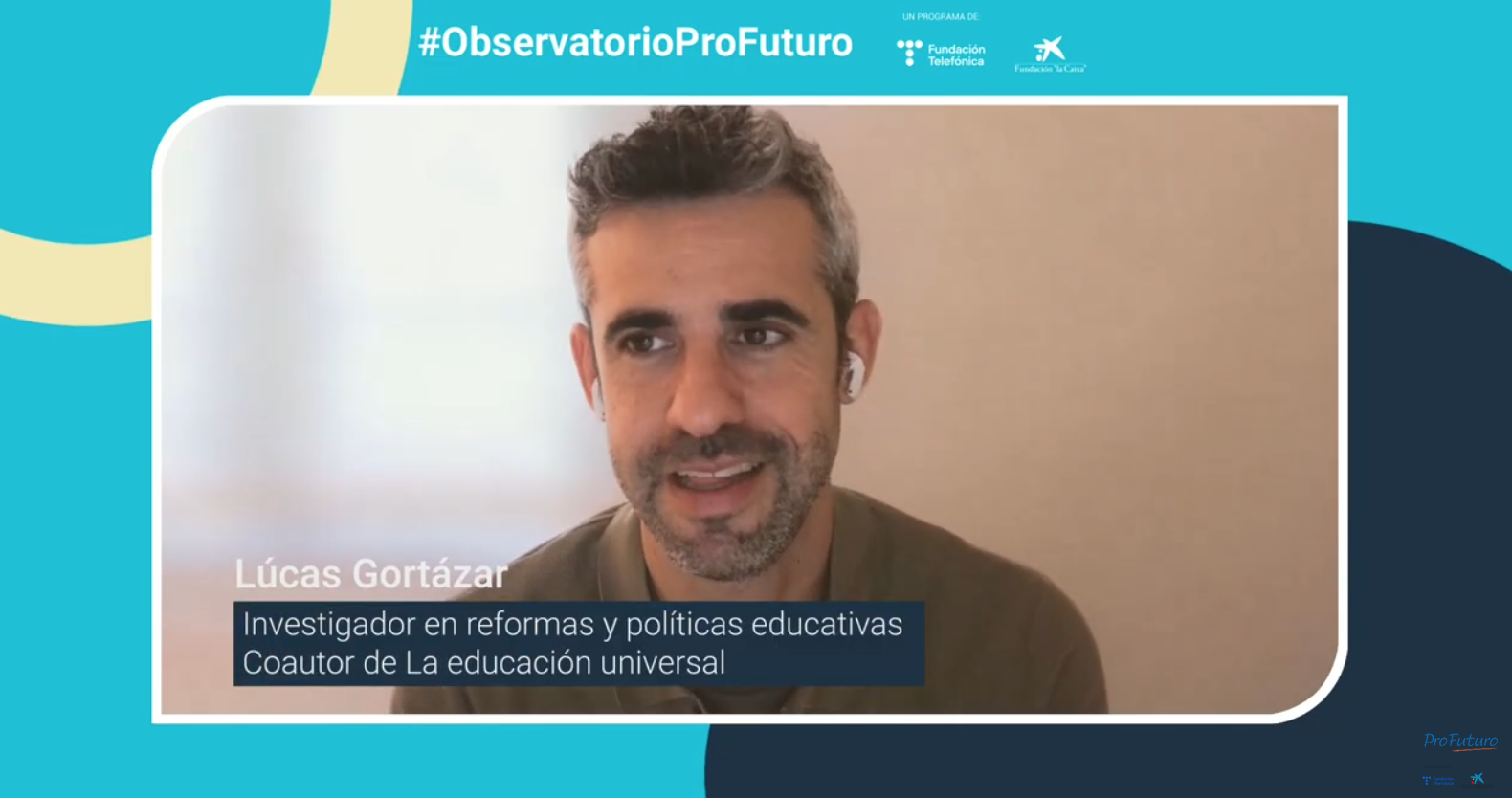Let’s take a look at a classic mathematical problem that’s sure to be very familiar to all of us: Elena has 60 melons. Her friend Marta eats 25 and her brother Luis eats 32. How many melons does Elena have left? When we all studied a few years ago, the answer to this problem was clear. The didactic designs, based purely on instructional response pedagogy, taught us that Elena had three melons left. Today, by applying computational thinking processes, we can get a very different answer. So, before answering how many melons are left, the students ask themselves: Why does Elena have so many melons? Why are they distributed like this? Who would eat so many melons?
With this example, Cristina Araya, head of education at Telefónica Foundation Movistar Chile, during a talk on computational thinking that we had with her and other experts in the field, explained one of the main challenges when it comes to training teachers capable of developing computational thinking in their students. Thus, she told us that the biggest challenge for teachers was to make the transition from the pedagogy of the answer to the pedagogy of the question: “Questions that are related to higher states of thought, being able to implement these thinking skills in a cross-disciplinary way in the development of the digital citizen. We’re referring to the ability to break down the problem, recognise patterns, abstract, sequence and so on”, this specialist told us. She concluded: “Making that transformation from the didactic design. That’s one of the biggest challenges.” Based on this reflection, the ProFuturo Observatory wishes to take a closer look at how teachers are being helped to address this and other challenges related to the application and teaching of computational thinking in the classroom.
Today, given the rapid, decentralised and diverse spread of computational thinking in various countries, it’s essential to address the issue of teacher training. In this regard, we must ask ourselves how we should train the teachers responsible for efficiently transferring computational thinking to their students.
As we’ve already seen, the goal of computational thinking is not to teach everyone to think like a computer scientist, but to understand how to use the concepts and processes of programming to apply them to our daily lives and activities so as to solve problems and pose new questions that can be resolved in the same way. Within this context, it’s important to bear in mind that the development of computational thinking doesn’t necessarily require the use of computational tools and languages, but rather an understanding of the cognitive processes involved in this thinking and strategies for addressing it using different methodological approaches. As a result, the teacher training opportunities discussed by experts in the field have mostly focused on the need to address pedagogical aspects rather than transferring digital skills. With all these elements in mind, what are the best teacher training proposals for teaching computational thinking?
During recent research for the European Commission, Stefania Bocconi, a Doctor of Cognitive and Educational Sciences, and other authors review the most interesting proposals submitted in recent academic studies. At the ProFuturo Observatory we’ve sought to summarise these proposals and extracted some of their key features.
Proposals for all subjects
Most of the proposals analysed appear to be designed for teachers of all subjects, with a particular focus on teachers of STEM ones. The pedagogical approaches that are addressed don’t focus on the acquisition of coding-related skills, but rather on furthering and acquiring pedagogical skills to facilitate complex problem-solving by means of computational thinking practices. They include storytelling, problem-solving and deductive and inductive pedagogies focused on computational models.
Initial training with a psychological approach
In this regard, some authors propose teacher training to introduce a module related to computational thinking focused on problem-solving and critical thinking into the initial training of primary and secondary school teachers, within the framework of a subject on learning and motivation theories. They thus seek to ensure that the teachers will not only be encouraged to work on computational thinking when they finish their degrees, but also that they will conceive it from a psychological standpoint that will help their students to effectively solve the problems they face.
Intensive training workshops with support and tutoring
Some other researchers have developed a comprehensive teacher training proposal that includes in-person training lasting one week, monitoring and support for teachers in the classroom and tutoring with online support. During the training workshops the proposal involves organising two working groups, one for teachers who want to integrate the principles of Computational Science into the school curriculum and the other for teachers who want to work on shorter, cross-disciplinary modules in different subject areas. Once the technical and pedagogical knowledge has been intensively acquired, each teacher will have to start applying it within his/her educational context, with the support of experts who will promote co-teaching by means of regular meetings and direct observation in the classroom. Finally, the proposal envisages additional online support available throughout the school year.
Online vs in-person training
Massive Open Online Courses (MOOCs) as a means of professional teacher training have also undergone a degree of development, although it should be borne in mind that maintaining an in-person component in this kind of training is always important. Thus, for example, a recent survey involving over 900 active teachers in England concluded that in-person training combined with the creation of online communities is particularly effective in addressing their training needs.
Specialisation for teaching Computational Science
Some authors refer to the need to “professionalise” and specialise teachers who are going to teach Computational Science in some way. In the specific case of primary education, they also see the need to include specialists in this area within the educational programmes for teachers so as to teach them the basics, linked, for example, to STEM subjects.
As we can see, there are numerous perspectives, approaches, resources and practices that can be used as models for designing teaching plans suited to the realities and needs of educational institutions, teachers and students. In all of them it’s important for the teacher to become, in the words, once again, of Seymour Papert, a specialist in the “art of learning” in order, with the help of computational thinking and technology, to revolutionise education conceived as a merely instructional process, in which the child doesn’t learn but is “taught”, and to develop an active kind of education in which everyone constructs their own learning.
BIBLIOGRAPHICAL REFERENCES:
Bocconi, S., Chioccariello, A., Dettori, G., Ferrari, A. & Engelhardt, K. (2016). Developing Computational Thinking in Compulsory Education – Implications for policy and practice. In Joint Research Centre (JRC). https://doi.org/10.2791/792158
Yadav, A., Hong, H. & Stephenson, C. (2016). Computational Thinking for All: Pedagogical Approaches to Embedding 21st Century Problem Solving in K-12 Classrooms. TechTrends. https://doi.org/10.1007/s11528-016-0087-7
Sentence, S. & Humphreys, S. (2015). Online vs face-to-face engagement of teachers for their professional development needs. Conference Paper. King’s College London. https://doi.org/10.1007/978-3-319-25396-1_7
Hazan, O., Ragonis, N. & Lapidot, T. (2020). Guide to Teaching Computer Science: An Activity-Based Approach. Springer https://doi.org/10.1007/978-3-030-39360-1






